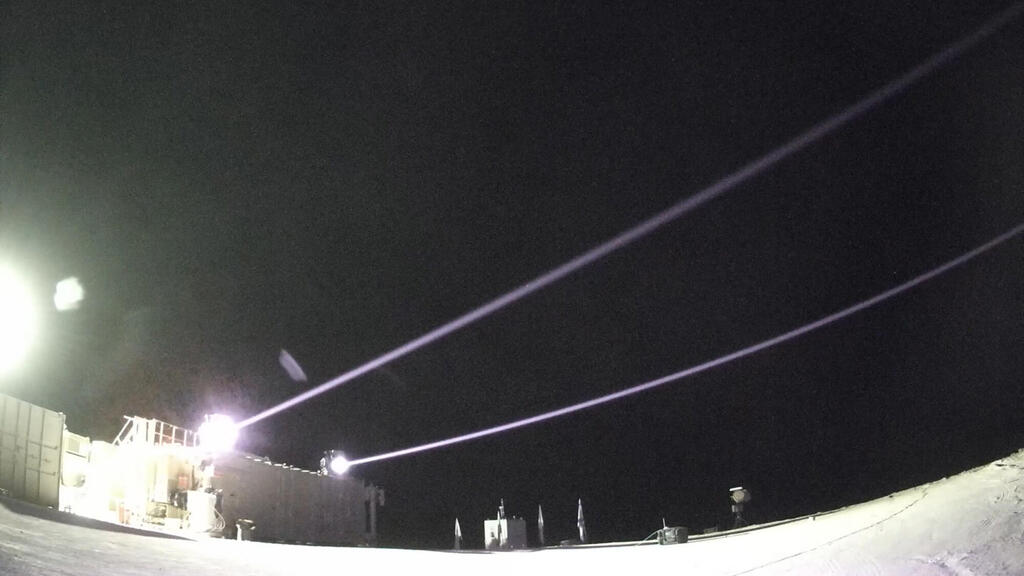
Israel completes groundbreaking laser air defense, hails "historic breakthrough"
The Iron Beam, the world’s first operational laser defense system, is set to join the army by year’s end after final tests succeed.
Israel’s defense establishment has successfully completed a series of final tests on Israel’s new laser-based air defense system, ahead of its planned delivery for operational use in the IDF by the end of the year.
This marks Israel’s emergence as the first country in the world to deploy a laser system as part of its multi-layered defense against a wide range of aerial threats. The tests were carried out at a simulated site in the Negev and challenged the system with rockets, mortar rounds, and UAVs.
The Iron Beam system, previously known in Hebrew as Magen Or, has been renamed Or Eitan in memory of IDF Captain Eitan Oster, who was killed in battle in southern Lebanon last year. Oster’s father, Dov Oster, is one of the initiators and leaders of the program within the Directorate of Defence Research & Development (DDR&D).
The system has already proven its capabilities in real combat, intercepting dozens of Hezbollah rockets and drones launched at Israel in southern Lebanon.
"פריצה היסטורית": הושלם פיתוח מערכת ההגנה האווירית הפועלת על קרן לייזרhttps://t.co/apLmPfrwjj pic.twitter.com/HYUFVnQBup
— כלכליסט | Calcalist (@calcalist) September 17, 2025
Rafael, the main contractor on the program, and also developer of the Iron Dome and David’s Sling systems, led the project alongside Elbit Systems, Shafir Systems, and SCD. At least in its initial phase, Or Eitan will work in conjunction with Iron Dome to defend against short-range threats.
The new laser promises to dramatically reduce the cost of interceptions. Operating at ranges of up to 10 kilometers, the beam neutralizes incoming threats at the speed of light, around 300,000 kilometers per second. Each Iron Dome missile costs around $50,000, while a laser shot costs only a few shekels in electricity. “The economic consideration is at the heart of such a system,” said Defense Ministry Director General Maj. Gen. (res.) Amir Baram. “Or Eitan brings us to an enabling economic model for interceptions, since we cannot rely on very expensive air defense.”
Amid international arms embargoes and restrictions on importing materials, Baram stressed that the laser system is entirely self-produced: “We designed it so there is no dependence on foreign components.”
Rafael Chairman Yuval Steinitz called the system “a historic breakthrough in the world of warfare,” noting its unlimited interception capacity.
Development continues on expanded versions, including mobile and naval systems. The mobile platform is designed to protect maneuvering ground forces against drones, UAVs, loitering munitions, and mortar fire, while the naval version is meant to defend ships and offshore infrastructure. A laser interception is silent and invisible: a coin-thick beam instantly locks onto its target, heats it to extreme temperatures, and brings it crashing down.
Related articles:
Though weather conditions such as haze and clouds can affect performance, developers say the system will remain operational 90% of the time thanks to technological advances. Elbit is also working on airborne laser systems capable of intercepting ballistic and hypersonic missiles above cloud cover, with an estimated timeline of less than five years.
Brigadier General (res.) Danny Gold, head of the DDR&D, emphasized that while the system is not cheap, the long-term savings are immense: “The costs of equipping it will pay for themselves through savings on interceptors.”
Rafael has already displayed the system at international defense exhibitions, drawing strong interest from potential customers. CEO Yoav Turgeman confirmed plans to export the system “in accordance with conditions set by the Defense Export Control Agency.”

